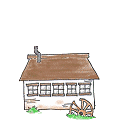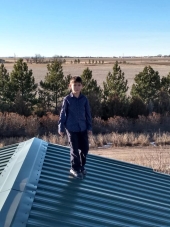Some thoughts. you speak of having lots of plant guilds in the chicken paddocks. keep in mind that chickens can be very hard on plants. You certainly can plant things in with them, but you may need to protect at least some of he plants some of the time.
Please forgive me if I am covering ground you know

That gully you describe - it sounds to me like a potential pond site. Have you thought about that option?
Permaculture design - it really is something we can do for ourselves, if we do our research and follow through with the steps of the process.
Have you looked at water movement on your property? Where does it come from, where does it move to, and then what can you do to keep it on your property and in your soil as long as possible? Lawton talks all the time about slowing, spreading, sinking and storing water.
It seems to me that most of the permaculture heavy hitters start with water - Lawton, Holzer, Shepard, Falk - manage the water. Prevent erosion, protect against drought, keep yourself, your livestock and your plants all supplied with that critical resource.
Water movement and supply informs all the rest of the design. Don't want to put your house in a natural pond site! Would not want your road to be a creek bed. Where you place gardens and livestock is related to where you have water.
Consider the offsite influences. Are you in an area with significant fire risks? What is the direction of prevailing winds? Fire is most likely to move with those prevailing winds, so you might want to think of firebreaks along that side of your property. If it happened to work that a pond would go there well, that would be convenient

The choices of what to plant are part of the details that you work your way down to, after the broad strokes are laid out.
After thinking about water management and giving consideration to influences from off your site (this can be everything from nosey neighbors to wandering hunters to weather patterns to predator pressures and on and on), give thought to your permaculture zones. Zone 1 is typically closest to your house, but includes anyplace you visit on a daily basis. Mark Shepard shares a wonderful example with the way he has his chickens set up - in essence he can feed and water the chickens,
compost his kitchen scraps, collect his eggs and a couple of other things all while standing in one spot. That spot is very convenient to his house and he can get all those chores done along with his morning coffee. If you need to do it every day, it is part of zone 1 and you want a design that makes it convenient, rather than having to head off in six different directions.
Zone 2 is for things that require some regular attention, but not necessarily every day. A kitchen garden would be zone 1, while a food forest might be zone 2.
Zones 3 and 4, even less frequent visits needed, with zone 5 being the part you leave "wild".
In the beginning of building a homestead, I think many people might find themselves with zones 1 and 5. First focus being on getting those things they will be doing everyday organized and in place - and everything else can be left to its own for now

Even then, you want to have your plans sketched out for the overall design, to avoid later conflicts. Does not need to be down to which plants and where, but you should know how you will manage water over the site and where your zones will be as the plan develops.
The often repeated advice, design from patterns to details, is good to keep in mind.
Good luck and enjoy the ride!









 .
.




















































